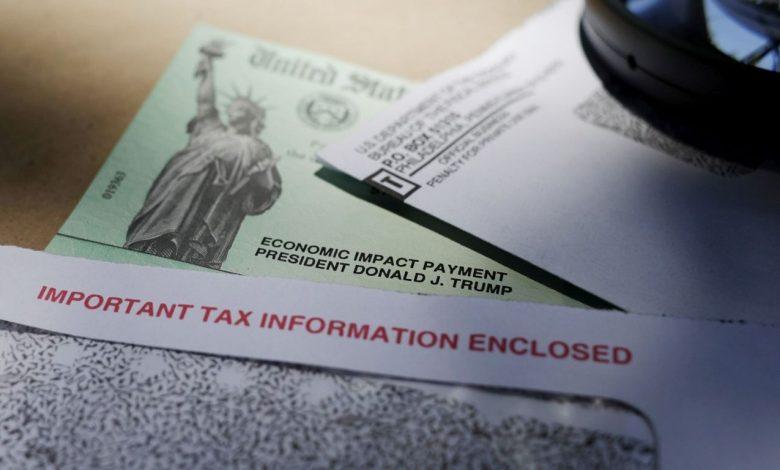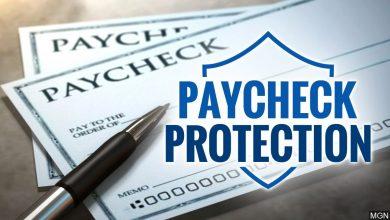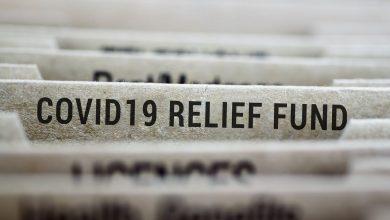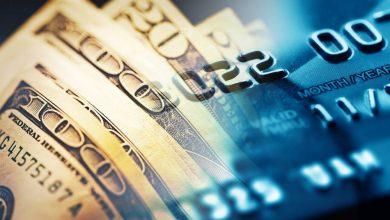How to Get a Coronavirus Stimulus Check Without Up to Date Tax Filings
Coronavirus Tax Relief and Economic Impact Payments

The Internal Revenue Service (IRS) has delivered more than 160 million stimulus checks to federal aid recipients, and while a new bailout is just weeks away from being approved, the truth is that Non-taxpayers can still request this first stimulus check. It is worth mentioning that the deadline to request the stimulus check without the need to file taxes is October 15, so the faster you can fill out the application, the sooner you will get the money. The IRS decision to set a new deadline for non-taxpayers is because millions of eligible citizens never applied, making this a new opportunity. Likewise, it should be borne in mind that the extension of the deadline is directed only for non-taxpayers, especially those belonging to the sector of the population with the least resources, that is, those with incomes of less than $ 12,000 per year, including Homeless and extremely poor people can request the stimulus check.
So how can I get a stimulus check without filing taxes?
Well, all you have to do is fill out the form that appears in the ‘Non-Filers’ section through the official IRS site. If the application is approved, then you can get a one-time payment of $ 1,200 or 2,400 as a couple, plus an extra $ 500 per dependent (maximum three).
12 million people will not receive the stimulus check
Since the process is carried out purely online, around 12 million people will not be able to receive the stimulus check, since it must be borne in mind that most of the citizens to whom this extension of the date is addressed limit, they are people of extreme low resources, who will find it practically impossible to have access to technology. Among the 12 million citizens who will not be able to receive the stimulus check due to lack of technology, 27% encompass the African American community, while 19% Latinos who reside in the country of stars and stripes.
Who will receive their paper stimulus check starting the following week of July 5
Taxpayers with incomes between $ 100,001 and $ 110,000 annually would be receiving their paper economic stimulus checks starting next week under the CARES law. Preliminary calendar data available from the Internal Revenue Service (IRS) specify that this is the group to which payments will be sent soon.
The money will be sent today, July 3.
The distribution of financial aid began last April 24, after that office in coordination with the Treasury Department deposited the economic impact payments in the bank accounts of beneficiaries who provided that information. These processes are additional to the initiatives that these agencies are leading to locate at least 12 million low-income beneficiaries for whom they do not have tax information to process their payment. For these potential recipients, the IRS enabled the “No-filers” tool, featured on the website of the tax collection office.
The available document does not include data on Americans who received payments in the form of a debit card, about 4 million. Recently, the Treasury Department acknowledged in a letter sent to representatives in the federal Chamber that some 44,000 recipients had requested a replacement of the plastic money until the date of June 17, which indicates that this amount corresponds to people who accidentally threw the card to the trash for doubts about its authenticity. In the same report, it is indicated that 73% of the cards have been activated.
Actions to take before claiming the IRS for late stimulus check mailing
The distribution of paper checks was organized according to the income level of the beneficiaries, so the first ones supposed to be sent are those of recipients with less income ($ 10,000 or less). The dates extend until September 11 with the distribution of money to the beneficiaries with the highest joint income ($ 190,001 – $ 198,000).
Following is the preliminary list of paper check shipments by income level:
• $ 10,000 or less: April 24
• $ 10,001 – $ 20,000: May 1
• $ 20,001 – $ 30,000: May 8
• $ 30,001 – $ 40,000: May 15
• $ 40,001 – $ 50,000: May 22
• $ 50,001 – $ 60,000: May 29
• $ 60,001 – $ 70,000: June 5
• $ 70,001 – $ 80,000: June 12
• $ 80,001 – $ 90,000: June 19
• $ 90,001 – $ 100,000: June 26
• $ 100,001 – $ 110,000: July 3
• $ 110,001 – $ 120,000: July 10
• $ 120,001 – $ 130,000: July 17
• $ 130,001- $ 140,000: July 24
• $ 140,001 – $ 150,000: July 31
• $ 150,001 – $ 160,000: August 7
• $ 160,001 – $ 170,000: August 14
• $ 170,001 – $ 180,000: August 21
• $ 180,001 – $ 190,000: August 28
• $ 190,001 – $ 198,000: September 4
• Rest of checks: September 11
What would be required for a second round of stimulus checks before it passes?
In keeping with President Donald Trump’s remarks, Treasury Department Secretary Steven Mnuchin said they “seriously consider” a second round of checks as part of a fourth and final stimulus package to alleviate the economic effects of the coronavirus. At a press conference this Thursday, the official said, “We are very focused, as part of an upcoming CARES Act, on seriously considering whether we need to distribute more payments and direct payments.” In the same media exchange, Mnuchin argued that the first round of checks “has worked very well,” this despite delays in sending millions of payments and problems with financial aid distributed in the form of credit cards. debit to some 4 million beneficiaries. Previously, in an interview with FOX News, the president said that an upcoming check could be more than $ 1,200 minimum.
“I favor larger numbers than those of the Democrats, but it has to be done appropriately,” said the president. “I want the money that comes to people to be more so that they can spend it. I want the money to come quickly and in an uncomplicated way, “he said. Trump added that “we had something the last time it discouraged employment.”
“You make more money if you don’t go out to work. That is not what this country is about … We want to create a tremendous incentive for people who want to return to work”, he said.
In that sense, the Republican had previously expressed himself in rejection of an additional weekly extension of $ 600 in unemployment insurance under the “CARES Act” that expires on July 31. Another expansion is included in the “HEROES Act”, approved by the Democratic majority in the House of Representatives, headed by Speaker Nancy Pelosi.
What the aid package must have to be approved, according to the president:
1. It must be a bipartisan project
2. It should encourage the return to work of those who lost their jobs as a result of the crisis and encourage the reopening of the states and the business industry
3. The legislation must contain specific provisions on shipping, so that the procedures led by the Treasury and the Internal Revenue Service (IRS) are facilitated and streamlined in a second round of distribution.





